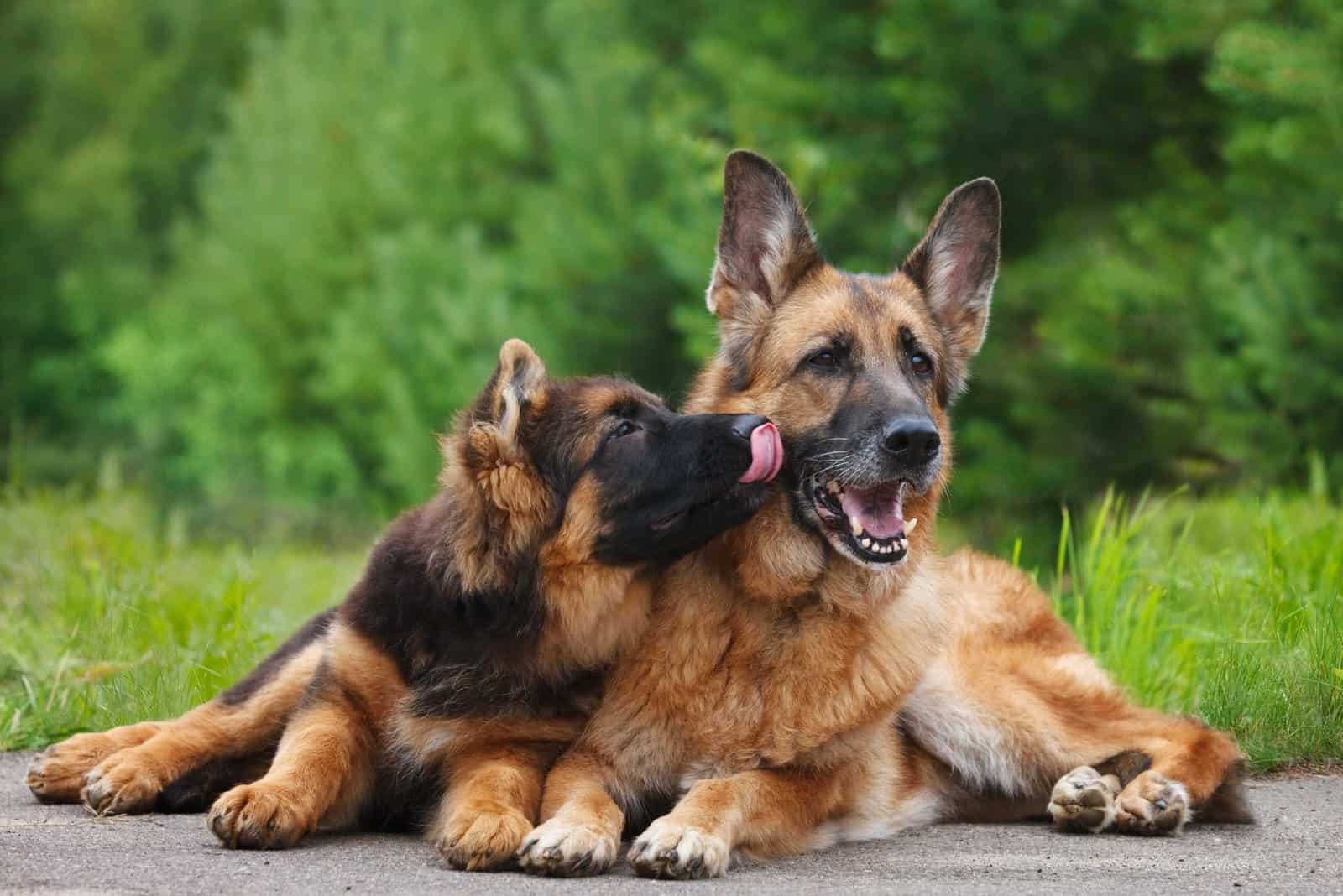Bringing home your German Shepherd puppy can be an exciting time, but also an anxious one. You may be wondering how fast your puppy will grow, how its needs will change over time, and what can be done to make sure your puppy is as healthy as possible.
The German Shepherd dog is intelligent, loyal, obedient, and one helluva fun dog to keep as a pet. Its friendly disposition and calm temperament are what make it a good dog for first-time dog owners.
Like most large breeds, they go through different stages of growth before they actually reach their full size. In this article, we’ll take a look at all these different growth stages as well as when your puppy will eventually stop growing.
We’ll address these questions and more, but please keep in mind that we’re using general estimates, and that this won’t be a prediction of how fast your dog might grow or how big it might get.
Your puppy’s growth rate may be quite different from that of your friend’s GSD puppy, but having a smaller German Shepherd puppy that finishes growing quicker than what you see in these growth estimates doesn’t necessarily mean something is wrong with your dog.
It’s also worth mentioning that you should let your dog grow at its own pace, and check in with your dog’s breeder and veterinarian frequently if you have any question or concern regarding your puppy’s development.
German Shepherd Puppy Developmental Stages

German Shepherds are large dogs. Even though your German Shepherd puppy looks like a tiny fur ball for the first few weeks, it sure as hay won’t stay that way!
Whether you’re planning on buying or adopting a new German Shepherd puppy, or if you already have one, in order to be prepared for your GSD puppy’s inevitable growth spurt, it’s important to first understand all the different developmental stages that your puppy will go through.
That way, you know what to expect and you can monitor your puppy’s growth progress from birth to maturity to make sure it’s hitting all of its marks and developing as it should.
This will ensure that you don’t buy underweight or sickly dogs, as well as help you to understand why a puppy is too young to be taken away from its mother and siblings before it hits certain milestones and reaches a certain age.
So, let’s take a look at the German Shepherd puppy’s stages of development from birth to adulthood:
Newborn Phase – Birth To Three Weeks Of Age
The first two weeks of a puppy’s life are called the newborn or the neonatal stage.
At this stage of their life, the puppies are blind and deaf. This is the same for all dog breeds, from German Shepherds to Cane Corsos.
About 90% of a puppy’s neonatal period is spent sleeping, and the other 10% nursing. Puppies this young can’t even regulate their own body temperature or eliminate waste on their own, so they are completely dependent on their mother to survive.
Puppy weight then gradually increases at a rate of about 65 to 90 grams a day depending on their size and the size of their mother.
Your puppy should begin to crawl at one week, and be able to see and hear at two weeks of age.
The two-week mark is when it should start to wag its tail and walk around and go potty away from the litter on its own, as well as when its first baby teeth should start appearing.
From the 2nd to the 3rd week of age, puppies will gradually become more independent and begin to explore their surrounding area on their own.
It’s interesting to note that both large breed dogs and smaller breed dogs are born at approximately the same weight.
Sure, there are some slight size differences between a Great Dane and a teacup Chihuahua puppy, but this is nowhere near as significant as the size difference will be once these pups grow into adults.
Socialization Phase – Three to 13 Weeks Of Age
At this stage, socialization is a crucial aspect of development as German Shepherds are very social animals.
As soon as the puppy has received its vaccinations, socialization with puppies outside of its litter should start.
It’s important to introduce your puppy to as many new objects, locations, people of various different ages and sizes, and dogs or other animals as possible so they learn how to properly interact with the world around them.
Dogs that are not socialized enough during this critical stage of development can sometimes become leery of new people and surroundings instead of being confident and friendly in any given situation.
By the four-week mark, your puppy should begin to walk easily, play with its littermates, and grow most if not all of its milk teeth.
By the six- to eight-week mark, your puppy should already exhibit some adult behavior such as better coordination, barking when excited or startled, and sniffing other dogs’ tails as a greeting.
The eight- to 13-week period is when a puppy can be weaned from its mother and start housebreaking; this is why most responsible breeders won’t allow you to take home a puppy that hasn’t reached eight to 13 weeks of age.
Juvenile Period – Three Months To Six Months Of Age

During the juvenile stage, development gradually slows down and your puppy will mainly just grow bigger. At this stage, your German Shepherd puppy will become even more independent, and it will love to just wander around and explore its surroundings.
Over the four- to six-month period, your GSD puppy will grow bigger, start to lose all of its puppy teeth, and gradually grow adult teeth, and its ears will start to stand upright on their own.
While growing their adult teeth, puppies will tend to chew on whatever they get their paws on, so be careful not to let them chew on anything valuable; that’s one lesson I’ve learned the hard way. It’s best to buy some chewing toys for your pup, so it can properly teethe without destroying your favorite pair of shoes.
The juvenile period ends with the adolescent stage when the dog reaches the point of sexual maturity by the six-month mark.
Sexual Maturity Phase – Six Months To 16 Months
The adolescent phase is when certain hormonal changes that are associated with sexual maturity begin to occur in the pup.
When your German Shepherd puppy is about six months old, you can start taking it for short walks. By this time, it should look less and less like a puppy and resemble an adult dog.
However, such young dogs don’t have the same stamina as adult German Shepherd dogs do. They might grow tired faster than you expect them to, so be careful not to go overboard. It’s important to keep exercise at a healthy level, so your dog can properly develop.
Female German Shepherds usually go into heat cycles between six and eight months of age, while male German Shepherds will begin roaming, mounting, and marking their territory during this time.
This is also the point in time when you need to decide if you’re going to breed your dog or not. If you don’t want to breed your pup, it’s best to consult a veterinarian about whether or not you should spay or neuter your dog.
Spaying and neutering puppies before the six-month mark could potentially increase the risk of inherent joint problems such as hip dysplasia, patellar luxation, and elbow dysplasia.
On the other hand, early pregnancy before the six-month mark can be dangerous for the dog because its bones are not fully formed.
This is why spaying and neutering are done after the dog reaches at least six months of age. The process of removing the dog’s reproductive organs helps protect against some severe health problems, and may reduce many of the behavioral issues related to the mating drive.
The sexual maturity stage lasts for a longer period since it usually ends when the dog is two years old or around that time.
Transition To Adulthood Phase – 16 Months To Three Years
As you can already tell, German Shepherd puppies take some time to reach the full adult maturity stage.
Female German Shepherds mature a little faster than their male counterparts, but as a general rule of thumb, German Shepherds of both genders reach mental maturity at around three years of age and physical maturity around two to 2.5 years of age.
Nutrition is critical at this point, and you should wean your dog off of puppy food and make the transition to high-quality adult dog food in order to help them grow into their final adult weight.
It’s important to maintain a healthy amount of nutrition as overfeeding your dog can result in excessive weight gain, and it can hinder the dog’s development as well as potentially cause further health issues.
During this transitional phase to adulthood, your pup should exhibit less puppy behavior like chewing and should lean more towards adult German Shepherd behavior.
However, this doesn’t mean you still won’t have your hands full because your puppy will continue to grow until it reaches between 2.5 to three years of age. At the end of this stage, your dog should reach its adult size and weight.
Old German Shepherd
While there is no precise age when your four-legged friend can be considered an old German Shepherd, after its first 18 months of age, a German Shepherd dog can be considered an adult.
It’ll reach the top of the German Shepherd growth chart, and any significant weight loss will likely be due to an unhealthy lifestyle or certain health problems.
Needless to say, there will always be a slight difference with every individual dog, and that is perfectly fine as long as it’s not deviating too much from the German Shepherd’s size and weight charts.
A German Shepherd’s lifespan is nine to 13 years on average, so don’t worry if your puppy grows a bit elderly; you’ll still have several years’ worth of happy times with it.
German Shepherd Growth Chart
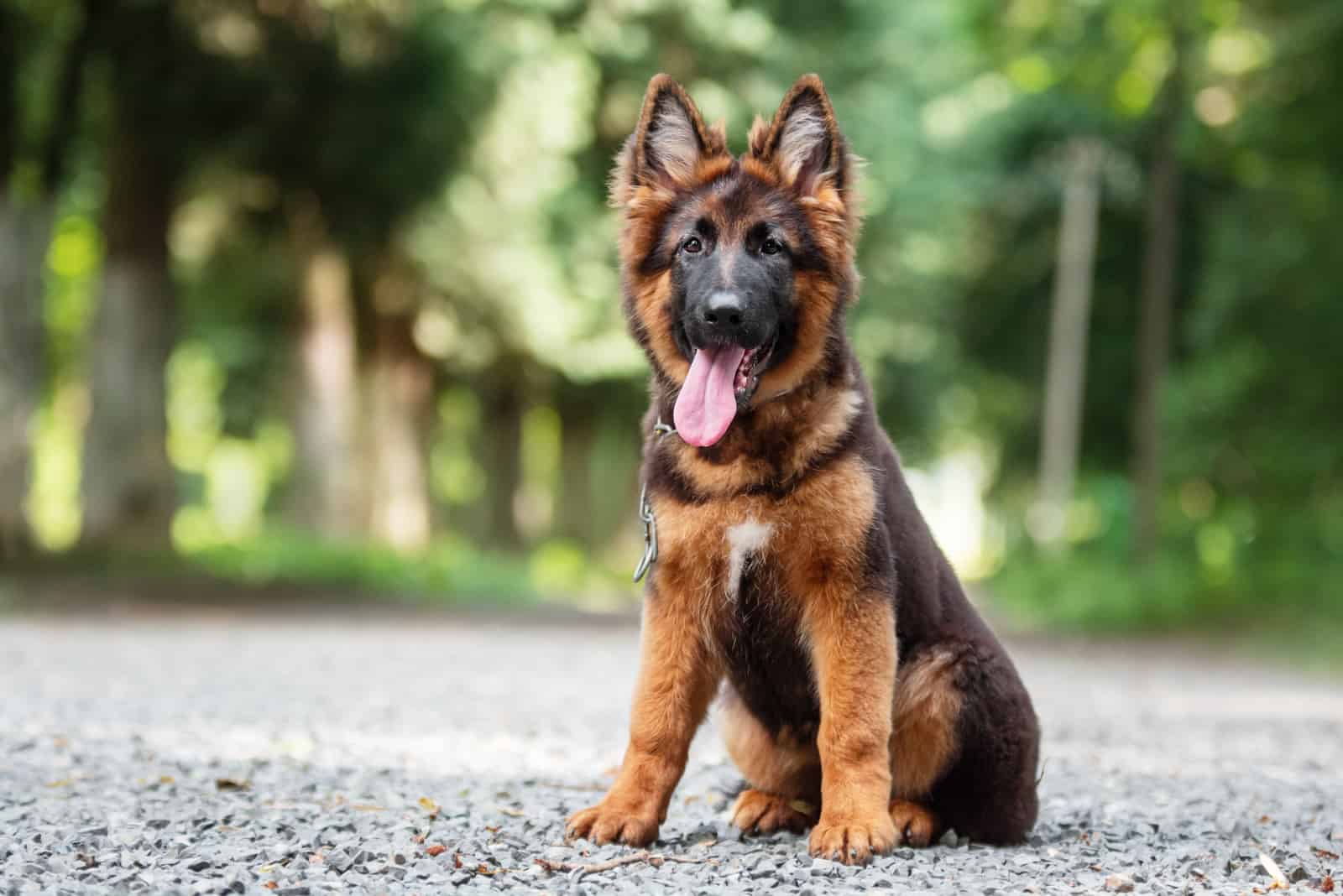
Now that you have a basic understanding of a GSD puppy’s developmental stages, let’s take a look at the estimated average growth chart milestones for both female and male German Shepherds.
Male German Shepherd Puppy Growth Chart
Here’s a look at growth chart timelines if we use an average male GSD with the ideal weight of 75 lbs at one year of age:
[table id=344 /]
Female German Shepherd Puppy Growth Chart
Here’s a look at growth chart timelines if we use an average female GSD with a healthy weight of 66 lbs at one year of age:
[table id=345 /]
As you can see, both male and female German Shepherd puppies finish a healthy chunk of their growth during the first six months, at which point the typical GSD has reached about 75% of its eventual full size.
Breed Standard For German Shepherd Height
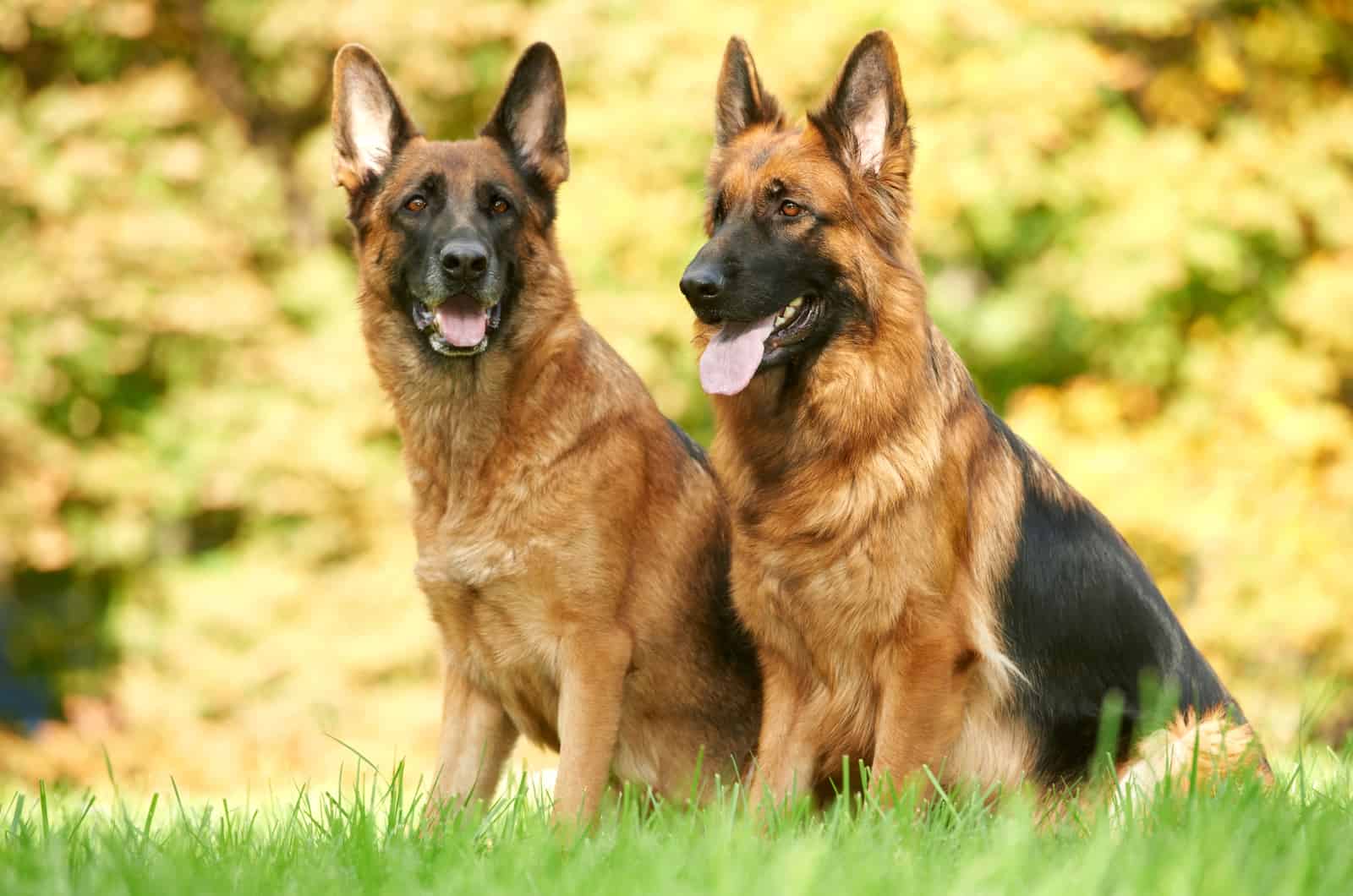
In order to estimate your dog’s growth, you should start with the German Shepherd dog breed standards.
Because a dog’s head is never stationary, the height of a dog is measured from the ground to the highest point of the dog’s back, between the shoulder blades, called the withers.
The adult female German Shepherd typically stands between 22 and 24 inches tall, while the adult male will reach heights of 24 to 26 inches.
Both typically measure between 8.5 and 10 inches in length from breastbone to pelvis.
German Shepherd Weight Chart
Now that you are familiar with the GSD’s growth chart, let’s take a look at the estimated average weight chart milestones for both female and male German Shepherds.
Male German Shepherd Puppy Weight Chart
Here’s a look at weight chart timelines if we use an average male GSD that stands at 26 inches tall at one year of age:
[table id=346 /]
Female German Shepherd Puppy Weight Chart
Here’s a look at weight chart timelines if we use an average female GSD that stands at 24 inches tall at one year of age:
[table id=347 /]
How To Estimate A German Shepherd’s Weight
In order to figure out how heavy your German Shepherd puppy will grow to be, you should start with the breed standard.
The American Kennel Club gives a weight range of 50 to 90 pounds, with about 10 pounds of difference on average between adult males and females as a breed standard.
You’ll also wanna look at the size of your puppy’s parents. Ask the breeder for the exact height, weight, and length, as well as how long it took each parent dog to complete its growth.
The third part of this estimate involves the puppy’s gender, genes, and determining which parent dog your puppy most resembles.
Your breeder will be in the best position to weigh in on this, and you can also ask how your puppy developed compared to the rest of its littermates.
If your puppy was in line with the average size and weight of the litter, it will probably remain an average size and weight in adulthood.
When Do German Shepherds Stop Growing?

Photo from: @germanshepherdmedia
Most German Shepherd owners probably wonder a lot when their puppy will stop increasing in size and weight and reach its full adult size.
The average GSD puppy will finish most of its growth by the age of one, but they may continue to add weight for another two years, so the dog’s weight and size will reach their full potential at three years of age.
Another thing to keep in mind is the timing of spay or neuter procedures as these can affect a puppy’s growth.
A dog that is neutered or spayed too early is then at risk for certain health issues later in life, which includes continued growth past what the breed standard suggests is normal.
What Factors Impact A German Shepherd’s Size?
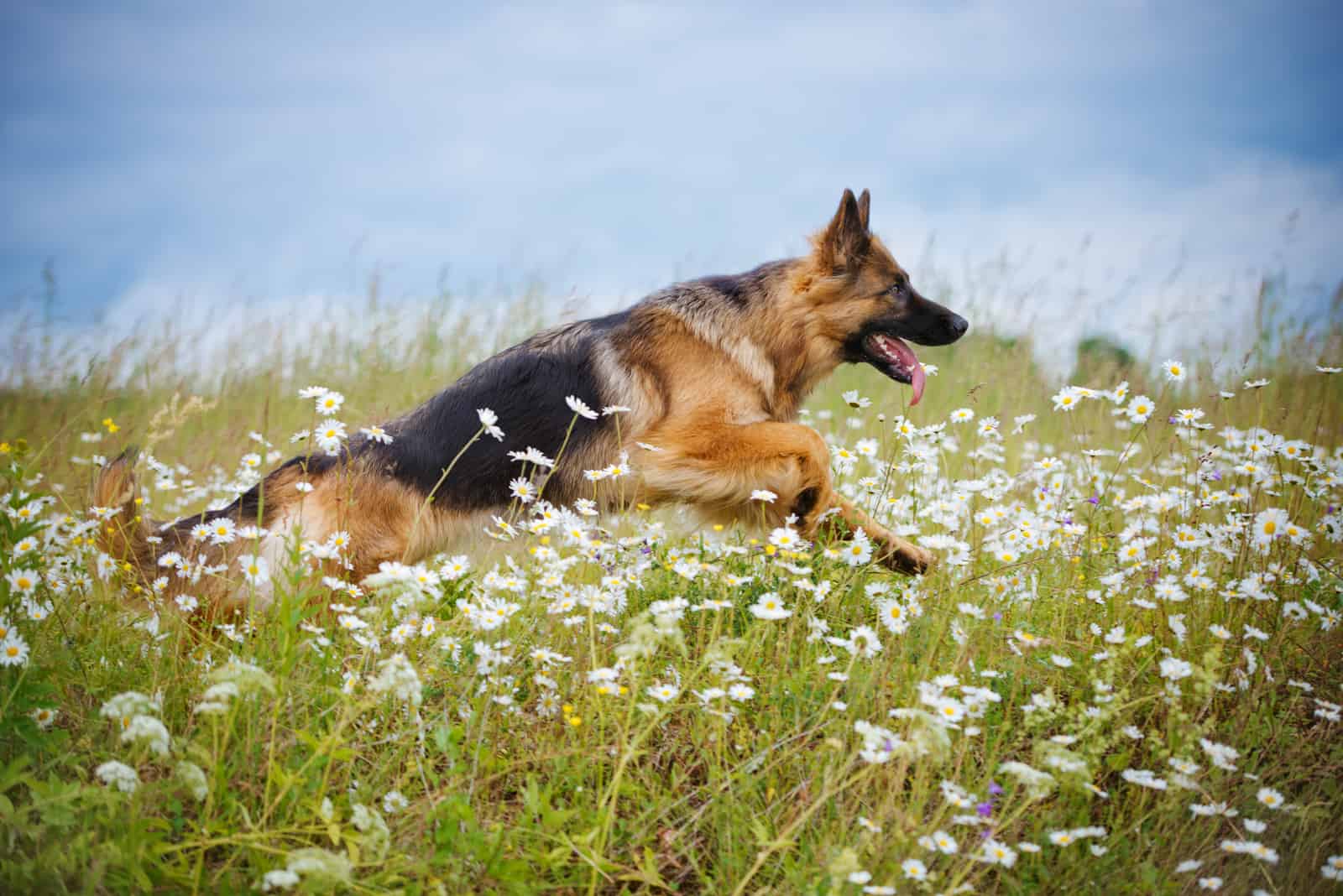
If you notice that your puppy is deviating from the German Shepherd growth chart, or if you just want to know how you can make sure your pup is of the right size when it is a full-grown GSD, you probably wonder if you or any other external factor could impact its size.
While it’s easy to guess what could lead to a dog’s weight gain, understanding the nuances of a German Shepherd’s size can be a bit more tricky.
Let’s take a look at the four major factors to consider that could impact your dog’s growth and lead to it straying from the GSD’s growth chart:
Genetics
Genetics is the single most important factor when it comes to how large your dog will grow to be. It is what causes Chihuahuas to stay petite and allows Great Danes to grow into giants. The same is true for the German Shepherd breed.
It’s important to meet the parent dogs when buying your German Shepherd puppy. If they are rather large, your puppy will likely grow to be at least a little bigger than its parents.
However, if your puppy’s parents are on the smaller side, it’s highly unlikely that your GSD puppy will grow larger than what the German Shepherd growth chart predicts.
Spaying/Neutering
Most legitimate breeders will advise you to spay or neuter your German Shepherd puppy once it reaches a certain age and size. In fact, even most veterinarians recommend these procedures.
Fixing a dog not only prevents unwanted pregnancies, but also reduces the chances of many serious health problems.
Some people think that spaying and neutering will stunt a dog’s growth, and to a certain extent, that may be true if the dog is younger than six months when the surgical procedure is performed.
However, once you fix a German Shepherd that has reached the six-month mark, you’ll cause a delay in the closure of its growth plates, which, in turn, can sometimes cause it to grow a bit taller and heavier than it normally would!
Malnutrition
If your GSD puppy didn’t get the proper nutrition it needed during its growth period, it can potentially negatively affect its development and stunt its growth.
If you don’t give your German Shepherd puppy enough food, or if you don’t feed it the right kind of dog food with adequate nutrients and sufficient calories, it may not grow as big as its peers.
Early puppyhood is a crucial stage in a dog’s development, especially when it comes to growth. You need to provide your GSD puppy with lots of vitamins, minerals, and other necessary nutrients in order to ensure its bones and muscles grow properly.
Take a look at our German Shepherd feeding chart for more information on this topic.
Infections Or Illnesses
Worm infections are a common problem with dogs in general, and, of course, this concerns German Shepherd puppies as well. While worms can be a dangerous and a potentially deadly issue, the consequences go even beyond this.
If your dog is infected with ringworm, the parasites inside its body will absorb all the nutrients that your dog needs, and take them for themselves. This basically causes the same effects as malnutrition.
Because of this, it’s essential to regularly take your pup to the vet for checkups, especially if you suspect that your puppy has been in contact with ringworm larvae. The sooner you give it deworming medications, the fewer the consequences will be.
How To Help Your GSD Grow
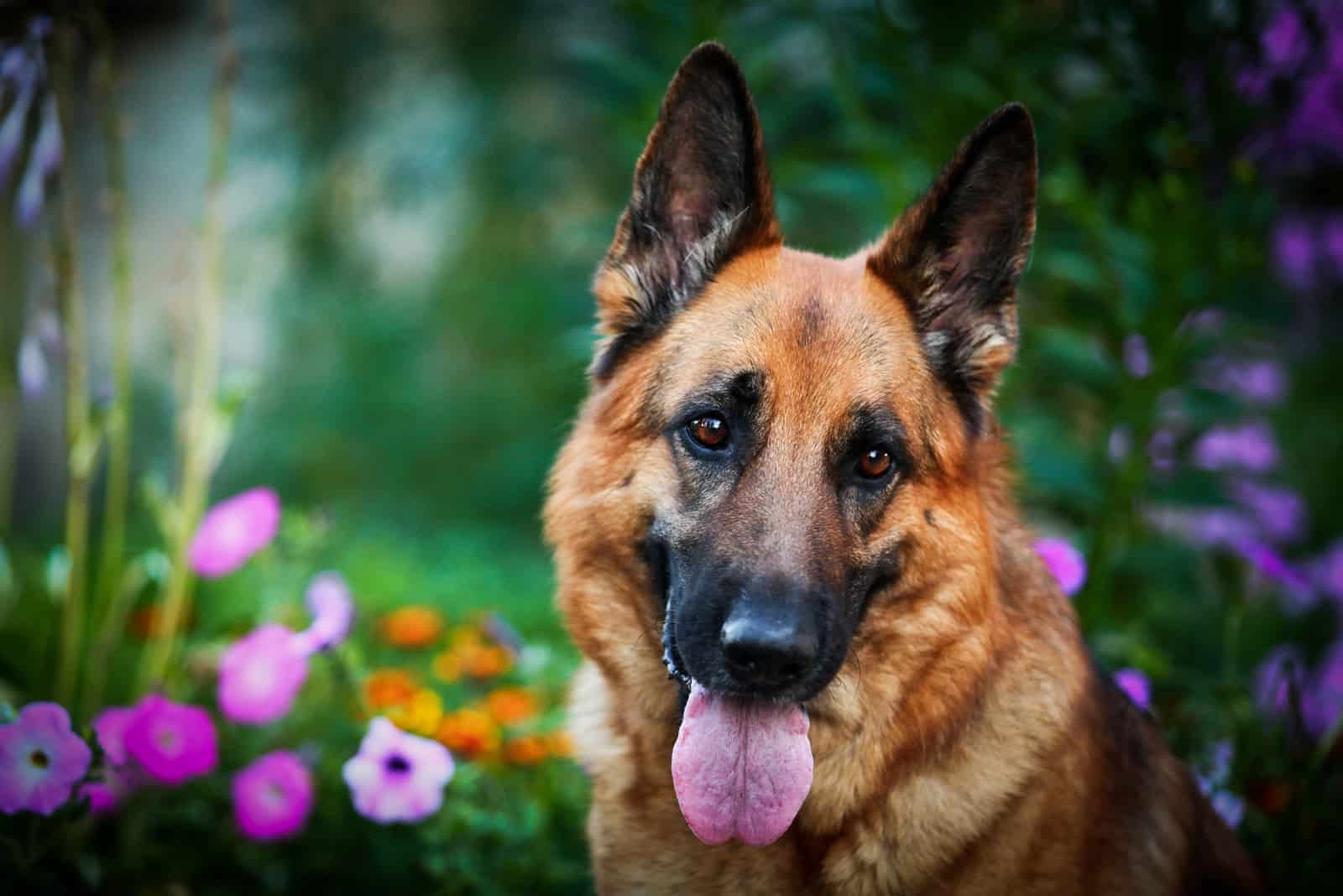
Now that you know what factors affect your German Shepherd puppy’s growth, it’s time for some tips on how you can help it reach its full size!
We all want our canine companions to be the best dogs they can be, so here are some tips for new German Shepherd owners who want their dogs to grow big, strong, and healthy:
Proper nutrition is key
One thing you don’t want to pinch pennies on is dog food. Always make sure you’re getting top-quality products that are designed for large dog breeds, with large dog needs in mind.
Many products are labeled as the best German Shepherd dog food, but you need to make sure you’re feeding your puppy something that will give it all the right nutrients it needs for its age.
Regular vet visits are a must
A dog has to be healthy in order to reach the recommended size in accordance with its growth chart. The only way to make sure your doggy is of perfect health is to never skip vet visits.
Speaking with a professional will help you learn proper feeding habits, and they might give you better insight into the German Shepherd growth chart.
If your puppy is underweight, the vet might need to treat it for parasites or create a treatment plan for diabetes. Of course, these are rare cases where the discrepancy between your puppy’s weight and its corresponding growth chart is abnormal.
How To Help Your GSD Lose Weight
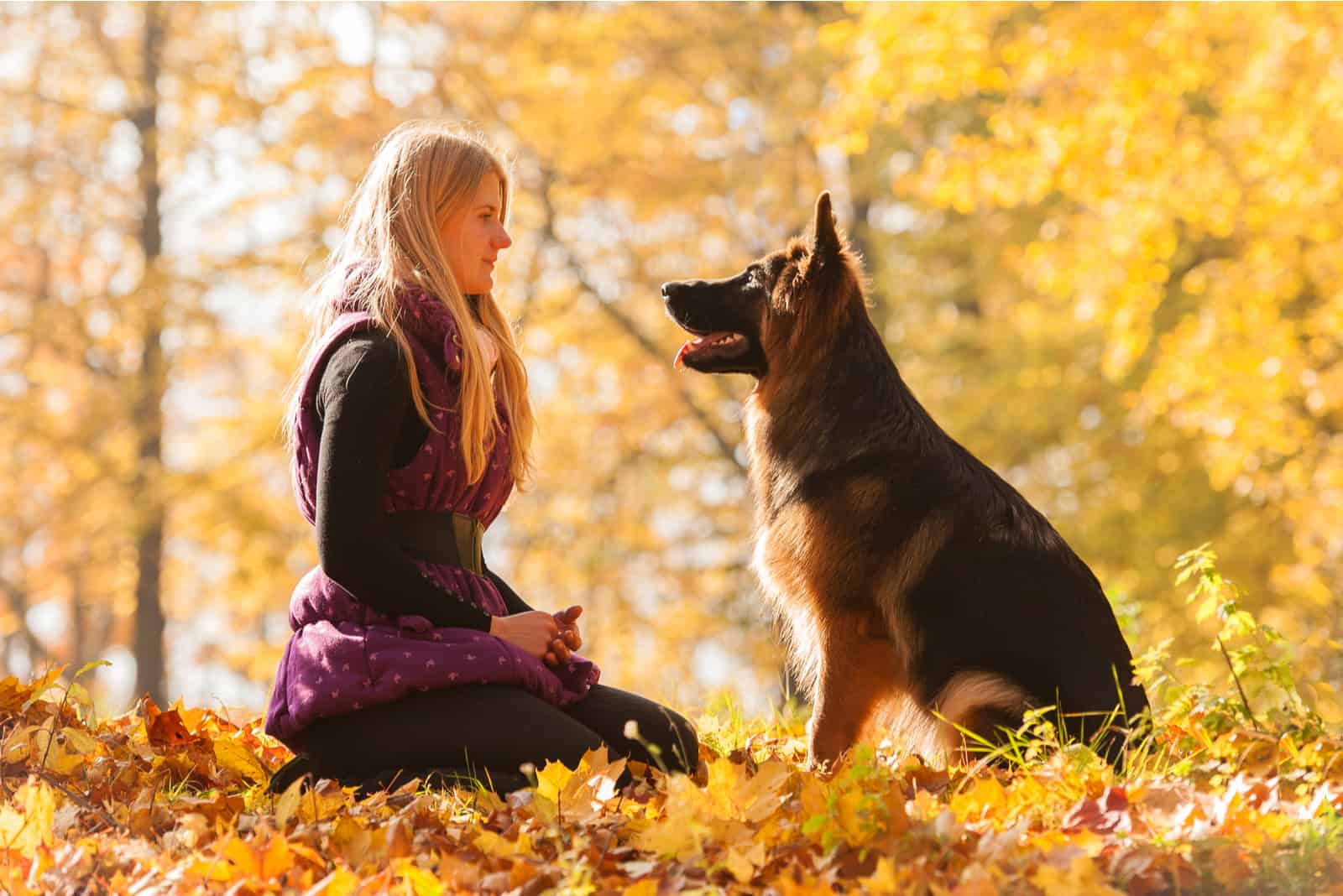
If you think your German Shepherd puppy is a little chubby, there are ways to determine for sure if it might just really be overweight. It’s best to take your dog to the vet so they can properly examine it and see if that’s the case.
If your puppy is indeed overweight, your vet might want to run some tests to determine if it has health issues like hypothyroidism or Cushing’s disease.
If your dog is declared healthy and it’s just a matter of a few extra pounds, there are simple ways to help your puppy shed that excess weight:
Reduce Calorie Intake
The average German Shepherd with a healthy weight needs to eat between 1200 and 1500 calories a day. If the dog is more active, it needs to consume around 1600 to 2200 calories a day on average.
So, if your puppy is overweight for its age, make sure to schedule fewer meal times during the day, and give it fewer calories per meal. You can easily calculate the number of calories your dog needs to consume in order to lose weight by reducing the average number by 10% to 20%.
If your dog usually eats an average of 1400 calories per day, try feeding it 1260 calories per day measured out in at least two meals per 630 calories for a couple of weeks in order to ensure it gradually sheds weight over time easily, and in a healthy way.
Never skip exercise
The German Shepherd is an active dog breed that requires frequent exercise. While outdoor activities might not affect the dog’s height, they certainly help it maintain a healthy weight and give it the muscular appearance that this majestic dog breed is known for.
Not to mention that exercise and training will help strengthen your dog’s bones and improve its posture, as well as help to shed those few extra pounds it might have.
German Shepherd Life Expectancy
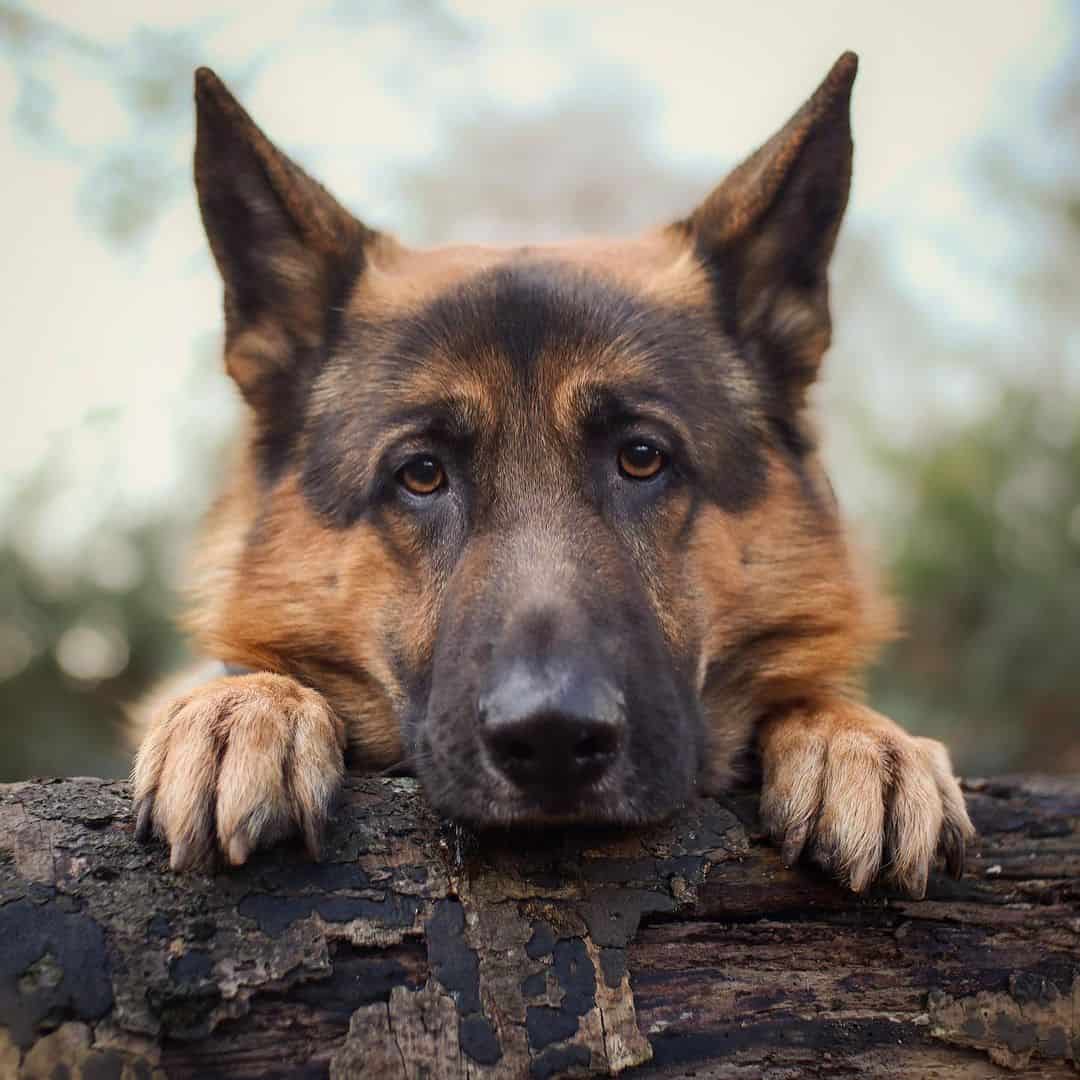
Photo from: @_gsdbear
Like many other large dog breeds, German Shepherds don’t usually live that long.
Nature has made it so that large breeds grow faster, and thus, have a shorter lifespan, while smaller breeds grow slower, but can live longer.
The average German Shepherd’s lifespan is nine to 13 years, but this depends on a lot of different factors like genetic issues, proper maintenance, and health conditions.
If your dog never develops any health problems or has some sort of injury that would impede the quality of its life (which would be the best-case scenario) it will live for a long while.
Although most German Shepherds live around nine to 13 years of age on average, some of the oldest German Shepherds in the world have been recorded to live as long as 18 to 20 years!
German Shepherd Puppy Prices

If you don’t already own a German Shepherd puppy, but you’re researching to find out if it’s the right dog breed for you, you’re probably wondering how much you can expect to pay for this puppy.
Like any other large purebred dog breed, the average price of a German Shepherd puppy varies from one breeder to another, but it never comes cheap. Reputable breeders will sell their puppies for around $1500 to even $3000.
Of course, the price depends on different factors, such as whether you want a pet-quality German Shepherd as a family companion or a show-quality dog with a pedigree. Other factors that affect the price of a GSD puppy may be a rare color coat or a champion bloodline.
Needless to say, purchasing your new puppy is only half the battle.
When you factor in all the additional expenses for doggy maintenance and upkeep like quality dog food, treats, food bowls, leashes, collars, toys, a bed, and vet bills in the first year of its life, a German Shepherd puppy can become quite expensive to keep.
All the extra expenses amount to an average of $2500 to $3000 in the first year, so you should always be prepared for any and all eventualities.
When it comes to finding all the doggy essentials you will need, you can find cheap but quality items online on websites like Amazon.
History Of The German Shepherd
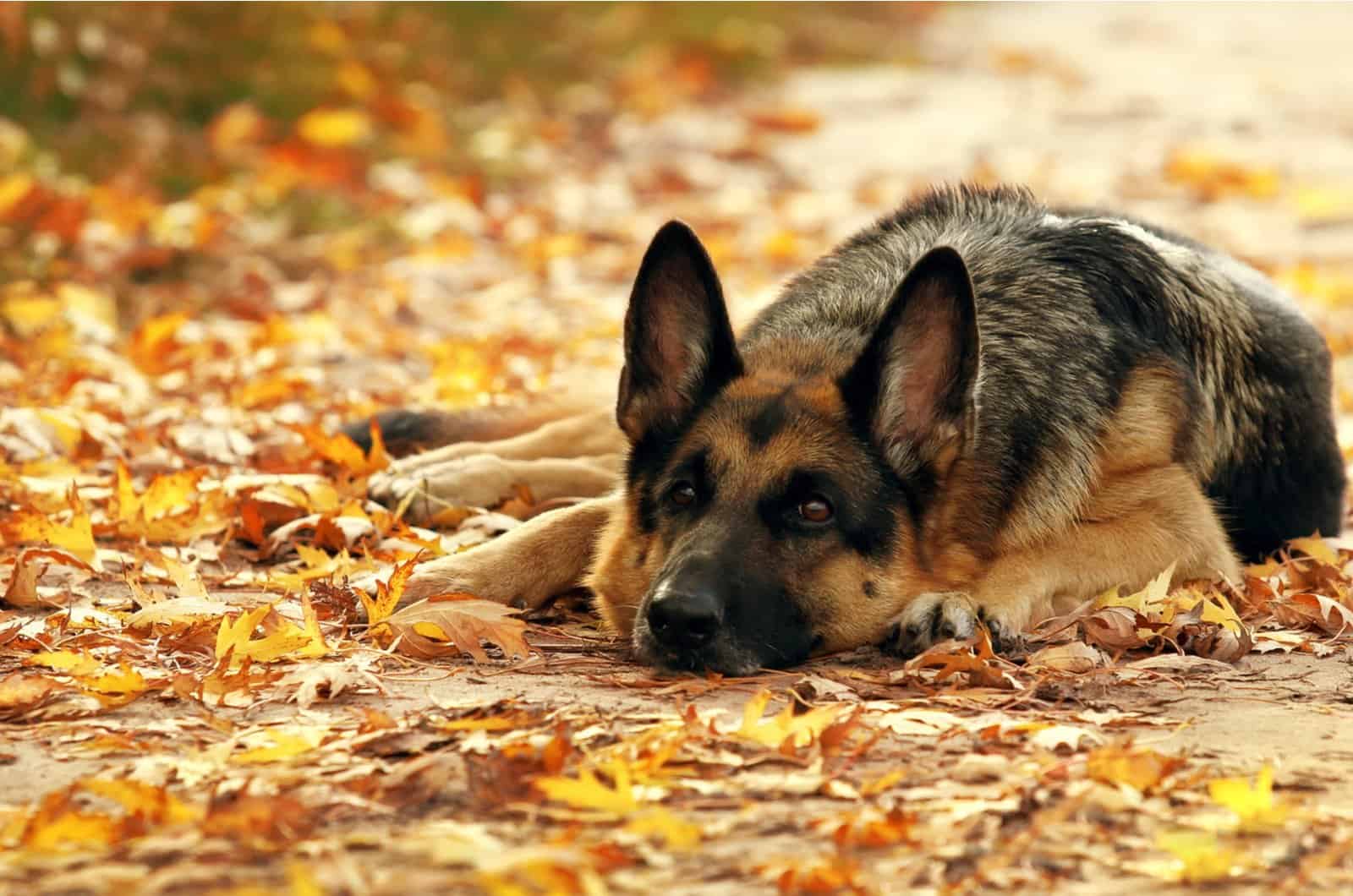
In the world of dog lovers, the German Shepherd currently ranks as the second most popular breed in the world according to the American Kennel Club statistics.
Its bloodlines originate from the cross-breeding of working sheepdogs in the early 19th century in Germany; hence, came the obvious name, ‘German Shepherd’.
They were created by 19th-century German dog breeders as working dogs to help herd sheep and other livestock.
To Wrap It Up
While German Shepherd growth charts can help you estimate how big your GSDs will be, they shouldn’t be followed blindly.
Just like how no two humans are the same; not every German Shepherd is alike.
It’s absolutely normal for a German Shepherd puppy to fluctuate over time, and have periods where it gets chunkier and thinner as a result of all the different factors that play a role in its development.
Hopefully, now you have a better idea of what to expect as you nurture your GSD puppy through its important stages of development, and you can begin planning ahead for staging food transitions and adding more physical exercise to its daily routine.
Remember to always do the research and try your best to provide your puppy with the best possible chance of living a long, healthy, and happy life by your side!
